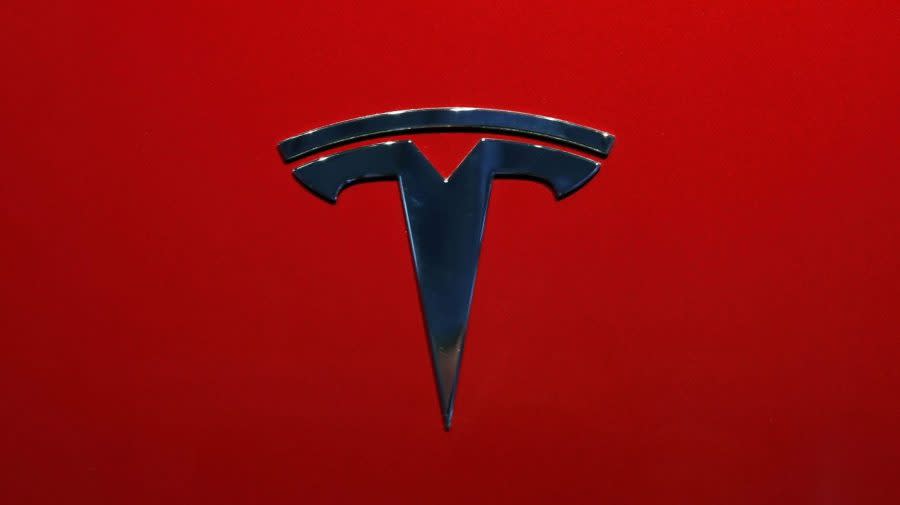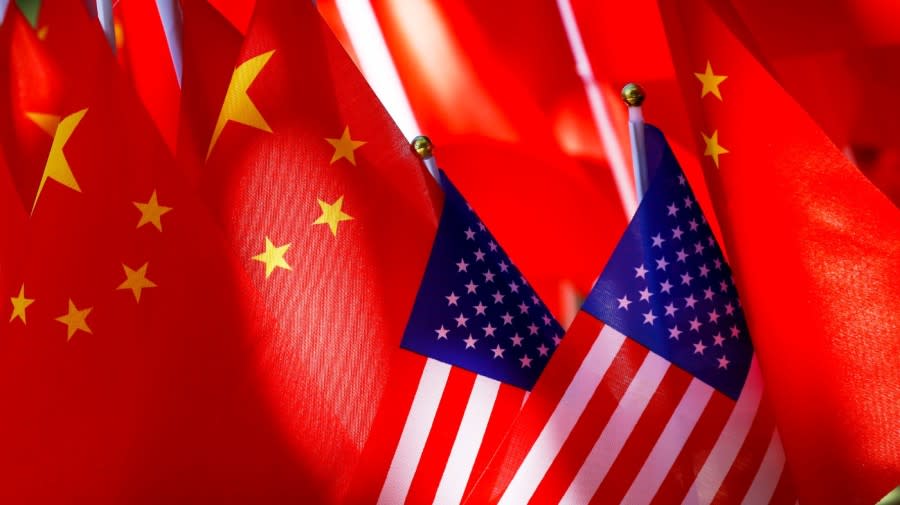Private jet emissions sky-high at Davos, group says
More than a thousand private jets shuttled dignitaries to last year’s global economic summit in Davos, Switzerland, a Greenpeace report revealed on Friday.
The flurry of these jets in and out of the mountain resort generated four times the carbon dioxide emissions that such aircraft would create in an average week, according to the report.
Greenpeace released the analysis, conducted by Dutch consultancy CE Delft, ahead of this year’s World Economic Forum meeting in Davos — slated to begin on Jan. 16.
“Europe is experiencing the warmest January days ever recorded and communities around the world are grappling with extreme weather events supercharged by the climate crisis,” Klara Maria Schenk, transport campaigner for Greenpeace in Europe, said in a statement.
“Meanwhile, the rich and powerful flock to Davos in ultra-polluting, socially inequitable private jets to discuss climate and inequality behind closed doors,” Schenk added.
Of all the 1,040 private jets studied, 53 percent were for short-haul trips less than 750 kilometers (466 miles), while 38 percent were under 500 kilometers (311 miles), according to the report.
Private jets are not regulated in the European Union, even though they are the most polluting form of transportation per passenger per kilometer, the authors stated.
Greenpeace accused attendees at the upcoming Davos meeting of “ecological hypocrisy,” questioning the World Economic Forum’s claims that it is committed to the global goal of keeping warming below 1.5 degrees Celsius (2.7 degrees Fahrenheit).
In total, the emissions generated from all the private jets flying in and out of airports serving Davos last year were equivalent to those produced by about 350,000 average cars for a week, according to the report.
Equilibrium has reached out to the World Economic Forum for comment.
Welcome to Equilibrium, a newsletter that tracks the growing global battle over the future of sustainability. I’m Sharon Udasin. Subscribe here.
Today we’ll start in the Southeast, where dozens of tornadoes left at least eight people dead. Then we’ll see why Tesla prices are plunging in the U.S. and look at how climate is making a comeback in Washington’s relationship with Beijing.
Thank you for signing up!
Subscribe to more newsletters here
The latest in politics and policy. Direct to your inbox. Sign up for the Equilibrium newsletter
Deadly tornadoes sweep through Southeast

At least eight people have died after dozens of tornadoes and severe storms ripped through the Southeast U.S. on Thursday, our colleague Julia Shapero reported.
Deadly storm system: Seven people were killed in Autauga County, Ala., according to multiple news outlets.
A 5-year-old died in Butts County, Ga., when a tree fell on a car, the county coroner confirmed.
At least 35 tornadoes were recorded across the Southeastern U.S. on Thursday, the National Weather Service reported.
‘Not a wall standing’: All of the adults killed in the storms were found close to their homes, Autauga County coroner Buster Barber told The Washington Post.
“Their homes were completely destroyed,” Barber said.
“I’m looking at four houses right now, and there is not a wall standing in any of them,” he added.
Emergencies abound: Alabama Gov. Kay Ivey (R) declared a state of emergency in six Alabama counties that incurred the most damage, the Post reported.
Georgia Gov. Brian Kemp (R) also declared an emergency for his entire state.
About 17,600 customers in Alabama and 20,000 customers in Georgia were without electricity as of mid-Friday, according to poweroutage.us.
Selma was hit hard: The tornadoes took a particularly destructive toll on Selma, Ala. — a city known for its civil rights legacy.
While no deaths were reported in Selma, schools were shuttered in the region, as debris clogged roads and inspectors assessed buildings, the Post reported.
Damage and division: Selma Mayor James Perkins, Jr. described the damage as “tremendous” at a news conference covered by the Post on Friday.
“Basically this tornado came through and divided our city,” Perkins said.
Tesla prices plunge across the US

Tesla is cutting prices amid both lagging demand for cars and new electric vehicle (EV) tax credits that come with strict price caps, our colleague Karl Evers-Hillstrom reported for The Hill.
Huge discounts: The EV giant decreased the cost of some of its cars by up to 20 percent: the Model 3 base model price dropped by $3,000 and the performance model price fell by $9,000.
The more expensive Model Y took an even greater plunge, with its price decreasing by about $13,000.
Why the plunge? EV prices skyrocketed during the pandemic amid supply chain bottlenecks that prevented production from meeting demand, Evers-Hillstrom reported.
But now, consumers have slowed down their spending and most Americans can no longer afford EVs.
Electric cars averaged about $66,000 last year, according to the Kelley Blue Book.
Great expectations: The decision to slash U.S. prices comes after a similar move in China and after Tesla reported a global sales total for 2022 that failed to meet analyst expectations, according to The New York Times.
Last week, the automaker cut prices in China by as much as 13 percent after deliveries of its Shanghai-made vehicles dropped in December, The Wall Street Journal reported.
Cuts could raise demand: Tesla’s price drop could help boost demand and take away a greater market share from its competitors, Dan Ives, an analyst at Wedbush, told The Hill.
“This is a clear shot across the bow at European automakers and US stalwarts (GM and Ford) that Tesla is not going to play nice in the sandbox with an EV price war now underway,” Ives said.
Strategic about-face: Tesla’s move to cut prices marks a reversal from the company’s strategy over the past two years, Reuters reported.
The decision also follows a warning from CEO Elon Musk that possible recession and higher interest rates could lead the company to lower prices to sustain growth.
Tesla shares fell 2.6 percent on Friday, after the stock’s worst year since its establishment.
China signals potential cooperation on climate, trade

China has indicated it is willing to cooperate with the U.S. on trade and climate change but not defense and security, according to the South China Morning Post.
Officials made their intentions known ahead of a trip by U.S. Secretary of State Antony Blinken to Beijing in February, the Hong Kong-based newspaper reported.
A tense backdrop: The Blinken visit to Beijing is expected to help reset China-U.S. relations amid years of tensions over Taiwan, the South China Sea, trade and human rights, according to the Morning Post.
President Biden and Chinese President Xi Jinping agreed to the visit on the sidelines of November’s G20 summit.
Climate change and trade officials from the two nations have spoken in recent days and agreed to hold more discussions.
Climate communications: China’s climate envoy Xie Zhenhua met with his U.S. counterpart, John Kerry, on Wednesday in a video meeting, the Morning Post reported.
“Both sides agreed to keep communicating to jointly handle the challenge of climate change,” said a statement from China’s Ministry of Ecology and Environment on Thursday.
A multilateral effort: Xie and Kerry spoke about promoting a global multilateral effort to address the impacts of climate change, according to China Daily, the English-language newspaper owned by the Chinese Communist Party.
Beijing had suspended climate talks with the Washington this summer when then-House Speaker Nancy Pelosi (D-Calif.) visited Taiwan, China Daily reported.
Talking about trade: Chinese Commerce Minister Wang Wentao said Thursday his country was willing to listen to American companies and work with the U.S. to promote trade cooperation, the Morning Post reported.
Wang made the remarks during a video conference with U.S.-China Business Council president Craig Allen.
The minister said Beijing was willing to “continuously improve” to create a market-oriented and law-based international business environment.
He also urged the U.S. to halt restrictions on Chinese companies.
Locking down U.S. oil: But in Washington on Thursday, the House passed a bill aimed at restricting sales from U.S. oil reserves to China, our colleague Rachel Frazin reported for The Hill.
The bill prohibits sales from the Strategic Petroleum Reserve to entities under the control, ownership or influence of the Chinese Communist Party, unless the oil will not be exported to China.
The legislation’s prospects remain uncertain in a Democrat-controlled Senate.
Sweden finds Europe’s biggest rare earth deposit
Swedish government-owned mine operator LKAB has discovered Europe’s largest known rare earth mineral deposit, our colleague Zack Budryk reported.
Mineral independence: The deposit, found in the northern city of Kiruna, is equivalent to more than 1 million metric tons of rare earth oxides, according to KLAB.
The discovery could help dramatically decrease dependence on China for electric vehicle components.
Europe currently has no rare earth mining operations and relies entirely on China for these metals.
Crucial discovery: LKAB president and CEO Jan Moström described these raw materials as “absolutely crucial to enable the green transition.”
“We face a supply problem. Without mines, there can be no electric vehicles,” Moström said in a statement.
Patience necessary: The company stressed that it will take time before the deposit can generate any useable raw materials, Budryk reported.
“If we look at how other permit processes have worked within our industry, it will be at least 10-15 years before we can actually begin mining and deliver raw materials to the market,” Moström said.
Follow-up Friday
In which we revisit some of the issues we’ve covered this week.
California rains ‘significantly reduced’ drought intensity
California’s onslaught of storms over the past few weeks have “significantly reduced drought intensity,” according to the U.S. Drought Monitor. Despite record and near-record precipitation over the past six weeks, much of the state still faces moisture deficits that “have been entrenched across some areas for the last 2-3 years,” the Drought Monitor reported.
Russia using own oil tankers to overcome EU sanctions
European oil sanctions are costing Russia $172 million per day and more restrictions are on the horizon. With fewer European ships now carrying Russian crude, Moscow has begun to transport more on its own vessels — unleashing “a shadow fleet of tankers” since the sanctions were imposed, Bloomberg reported.
Whale deaths lead to criticism of offshore wind
U.S. offshore wind saw a strong 2022, despite economic challenges. But after the seventh dead whale in just over a month washed up on the New York-New Jersey coastline, activists have ramped up concerns that pre-construction of turbines are causing harm to marine life, NJ.com reported.
Please visit The Hill’s Sustainability section online for more and check out other newsletters here. We’ll see you next week.
For the latest news, weather, sports, and streaming video, head to The Hill.
